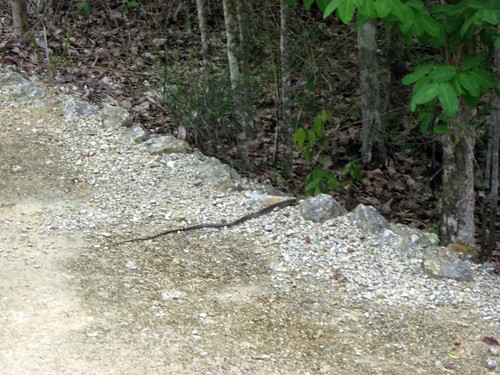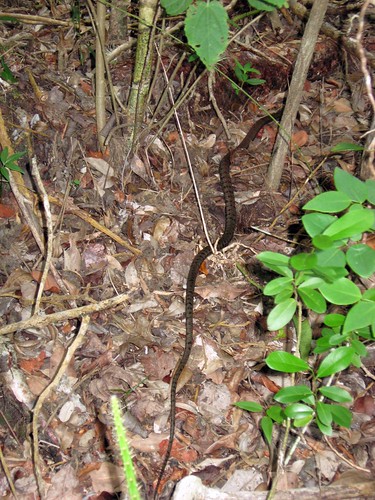So as we previously noted rare ground iguanas here in the Caribbean are frequently "headstarted" - which is to say the hatchlings are grown on for a couple of years until they are big enough to avoid predators. Mostly these are introduced predators - dogs, feral cats (speaking of which apologies for any typos - a formerly feral kitten has just sat on my throat as I type this lying on the sofa) or mongoose. The only real native predators for Cayman's blue iguanas is this - Cayman's endemic Alsophis racer.
This one was crossing a path in the heart of the QE2 Botanic Gardens and my photo was assessed by one of the team there with "gosh - that's a huge one!" What I really wanted to do was tail the snake and bring it out onto the path for some proper photos but there was a problem: I kind of bottled it. Alsophis are sort of venomous. They are rearfanged and don't tend to envenomate humans for whom their venom is not normally reactive (I'm told its pretty lethal for young iguanas though). They are however a very bitey snake and usually will strike and bite a lot when caught.
This one was cool as a cucumber though and slinked off whilst I repeatedlymade a hesitant grab for it and missed completely. In the end the above was the best shot I got before it went down a hole.


No comments:
Post a Comment